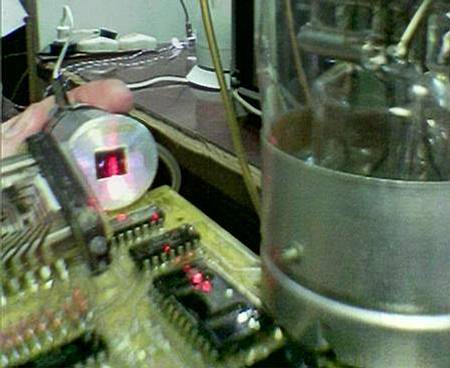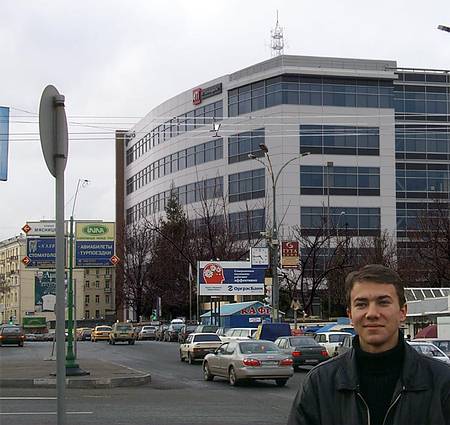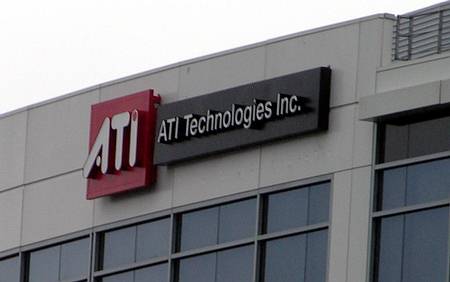Optoelectronic Computer From An Old Calculator
ATI Moves Headquarters To Moscow, Russia
Ball Mice Strike Back
Elbrus 6K: Effort Redoubled
Optoelectronic Computer From An Old Calculator
It seems small- and medium-scale integration chips have sunk into oblivion long ago. But don't you throw away ye olde vacuum-display calculators. The scientists at Saratov Institure of Precise Mechanics found a way to tranform these ancient devices into newest optoelectronic computers.
Their development utilizes several physical effects at once. First, the laser radiation repeatedly reflects from silicon chip surfaces thus making a coincident wave; second, the laser radiation interacts with plasma that forms in discharges of vacuum display and gas tube (TGI1-365). As a result, they can modulate laser radiation intensity or, vice versa, discharge current strength by laser power.
The developers claim they achieved outstanding results: the potential data transfer rate of internal bus exceeds 1 petabit (1 quadrillion bit) per second! They just couldn't measure the internal bus throughput with enough precision, since the device's microprocessor operates at mere 32.168 kHz.
ATI Moves Headquarters To Moscow, Russia
Not long ago (on March 24), Dave Orton, President and Chief Executive Officer of ATI Technologies, made his first visit to Moscow, Russia. According to the confidential information that we were allowed to hear, it was not an ordinary courtesy visit. At the moment the company is building a new office in our capital, and Dave Orton was inspecting it as planned.
The construction is nearly over and they plan to move into it the entire ATI Europe headquarters. That's why Peter Edinger, Vice President and Managing Director, ATI Technologies (Europe), also visited Moscow on that day - he will work here as well.
The new office is off limits at the moment, so our reporter Vitaly Milov just strolled along and even had several photos made.
Ball Mice Strike Back
I think all of you will agree that a wireless mouse is more convenient than a wired one. But it still has one annoying drawback: its battery needs to be recharged from time to time. And it actually weighs more than usual "rodents".
That's why engineers from a start-up named Dynamo-Ball offered such an original, though essentially primitive solution, and again proved that progress is spiral. They suggested we get back to using those long-forgotten ball mice. It's very simple: just calculate how much energy we waste spend on moving the mouse around, isn't it a pity to lose calories in such a way? Why not tranform this mechanical energy of ball rotation into electricity?
The current level of electromechanics enabled to install a miniature high-efficiency generator into a mouse. You won't even notice this slight additional resistance while moving the manupulator around. This solution is fully autonomous and is capable of working even without any batteries. The latter is needed only as an energy buffer as the dynamo might still let you down in higher-precision applications (like games).
The budget models of such mice without batteries will cost about $10-15. Gamer models are being tested at the moment. The developers also promised to solive the ball cleaning issue with a miniature ultrasonic generator that will shake off dirt from time to time.
Moreover, the company is not going to stop and already focuses on the next innovation - wireless keyboards. These devices can get electricity from the reciprocating key movement.
Elbrus 6K: Effort Redoubled
The fate of Elbrus processor, the long-anticipated and long-suffering brainchild of Roman Babayan, seemed to be on the brink of extinction after he left for a new job in Intel. However, the team he gathered is not going to give up. Since the industry had entered the multi-core era, with a redoubled effort they managed to create a dual-core Elbrus 6K that outperforms any analogs by at least two times.
See for yourself: a chip with 400 million transistors and 4MB L2 cache per 8GHz core processes 8 instructions per clock. However it consumes 160W of energy, so at maximum performance it requires a good dash of liquid nitrogen to cool down. Its 24-stage pipeline feature a dual-level prefetch mechanism: first it prefetches the prefetch and then the prefetch prefetches instructions from memory.
But! The key benefit of the new processor is simultaneous support for EM64T and AMD64: both SIMD/SSE2, VT and Nx Bit; and AMD Now!, AMD Live!, and Pacifica. The issue of socket compatibility was solved in a very original way: on the one side CPU features contact pads for LGA775, and on the other - pads for Socket AM2. At that Elbrus 6K has an integrated DDRII/III memory controller that disables when installed into an LGA775 socket.
Write a comment below. No registration needed!



